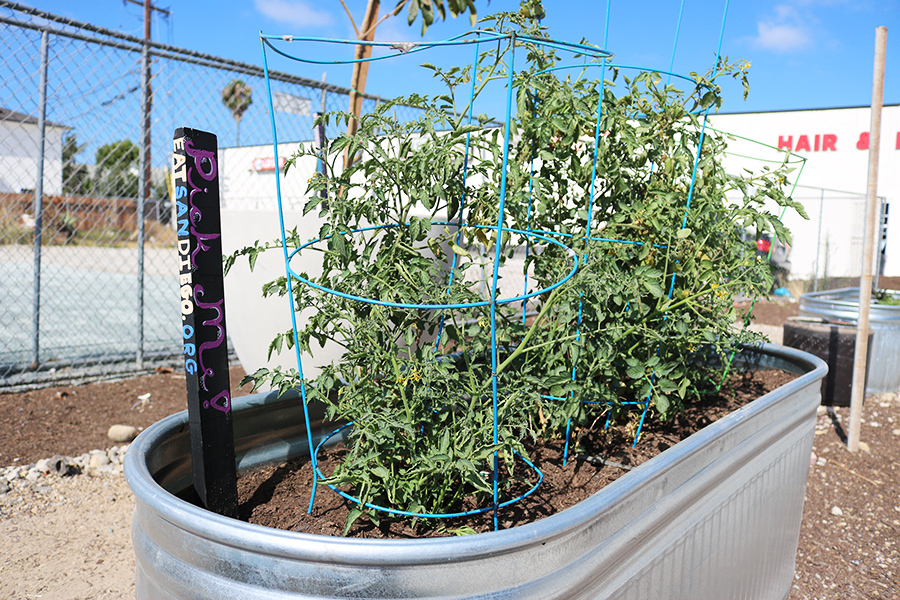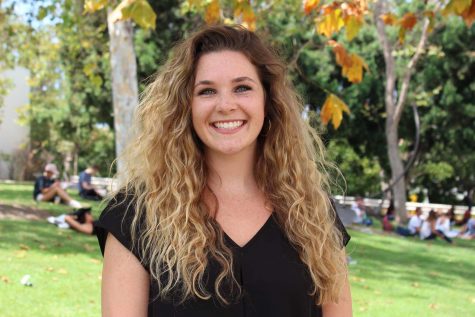It is a concept taking root in San Diego one bus stop at a time. Creating community gardens in spaces otherwise forgotten. City Heights has shown to be fertile ground for the free food movement.
Eat San Diego is a volunteer group that plants free food for the general public to enjoy. On July 29, the free food movement came to City Heights with the installation of the free food park.
This is the first of its kind in City Heights.
The garden contains a variety of fruits and vegetables planted for the community to enjoy freely.
The idea for this project started with one man planting vegetables at bus stops around San Diego, without asking for permission.
“We think that public space has a lot more potential and there is kind of this value in dusty corners of bus stops,” Eat San Diego founder Devon Lantry said.
Lantry had the idea to make San Diego an edible city. Lantry said he initially went to the city clerks office with the idea to plant edible crops at a bus stop.
After learning that the city had not approved fruit trees to be planted, he decided to plant fruit trees anyway.
The community welcomed the fruit trees with open arms, and green thumbs.
“It’s beautiful, it smells better and everyone gets free food,” Lantry said.
Lantry said Eat San Diego’s goal in creating free food parks is to alter the ways in which community space is utilized.
The newest free food park features five bathtub-sized planters with a small walking trail that winds through peach, pink lemon and loquat trees with garden beds raised for accessibility.
Along with edible food, the park is decorated with native plant species that feed local pollinators and endangered butterflies.
“I think it is kind of a waste of money to plant regular trees when for the same price you can plant orange trees and everyone loves it,” Lantry said.
Eat San Diego unveiled its newest free food park on El Cajon Blvd. in the diverse community of City Heights.
In less than seven square miles, more than 30 languages are spoken. 44 percent of City Heights residents are first generation immigrants.
“When you walk down the street and pick a fresh fruit or veggie from a shared community garden, that’s something special,” Eat San Diego co-founder and City Heights resident Kelly Colt said. “It’s something that causes a shift in how you think about your neighborhood.”
Reflecting the diversity of the community, the free food park grows vegetables found in the cuisines of Cambodia, Vietnam, Ethiopia, Guatemala and other countries of origin represented in the community.
In addition, the free food park also grows traditional American crops that are less commercially viable than produce found in most grocery stores.
“It stops being a place you live and starts to feel more like home,” Colt said.
Eat San Diego has two other free food parks located in Point Loma and Ocean Beach. Other traditional community gardens are scattered around San Diego.
Lantry said Eat San Diego has proposed a long list of new locations to create more projects.
Specifically, he said he has taken an interest in the Barrio Logan community.
The free food parks are run entirely by the commitment of volunteers. Anyone can help in the movement by doing the simplest of actions.
The City Heights free food park for example does not have an internal water source and relies entirely on water brought in by hand. Simply bringing a cup of water for the garden beds can help to make these gardens not only stay alive, but thrive for the community.
For those who see a bland sidewalk, who have an empty lawn or who own a bare store front, Eat San Diego seeks to utilize that space with more free food parks and community gardens.
The crops in the City Heights location are expected to be ready this fall and winter, and will be available for the community to pick and enjoy, even while waiting for a bus.









